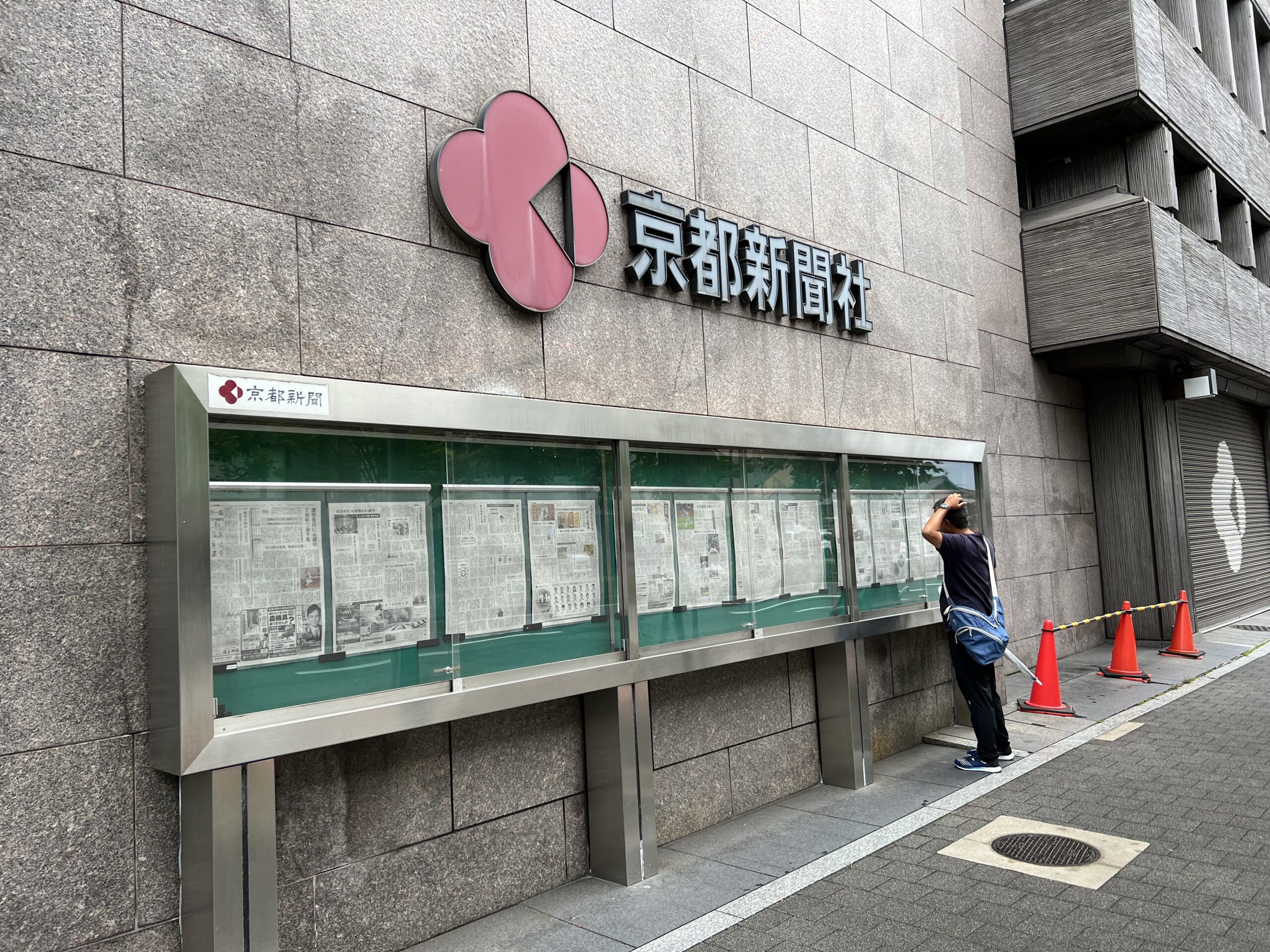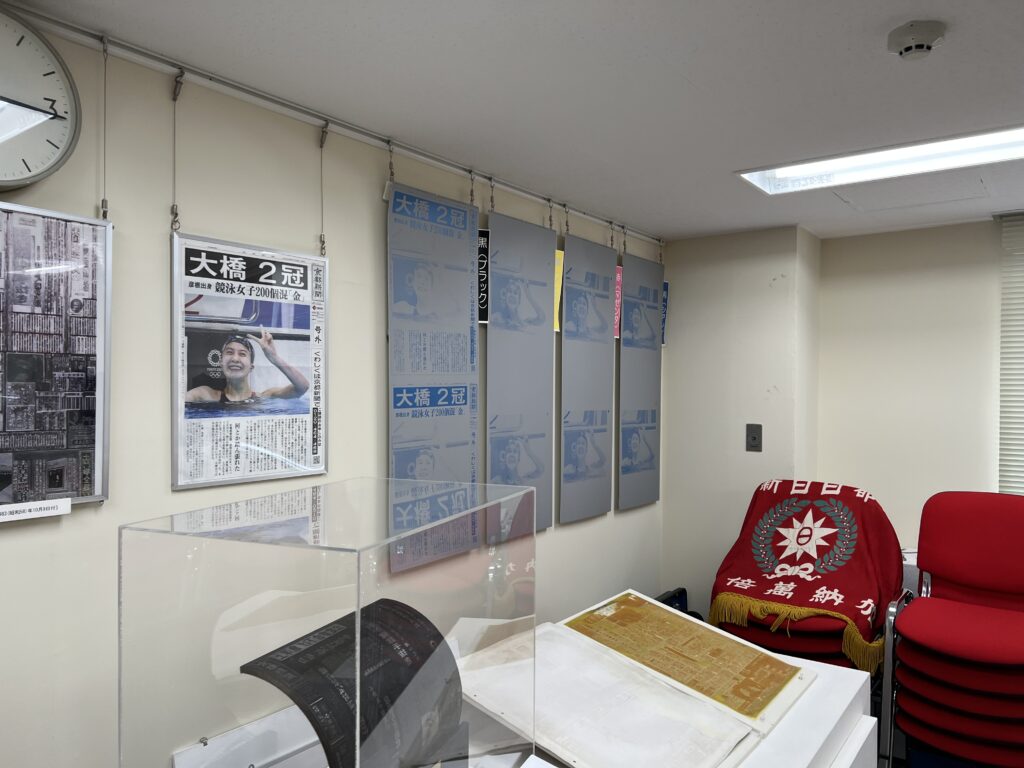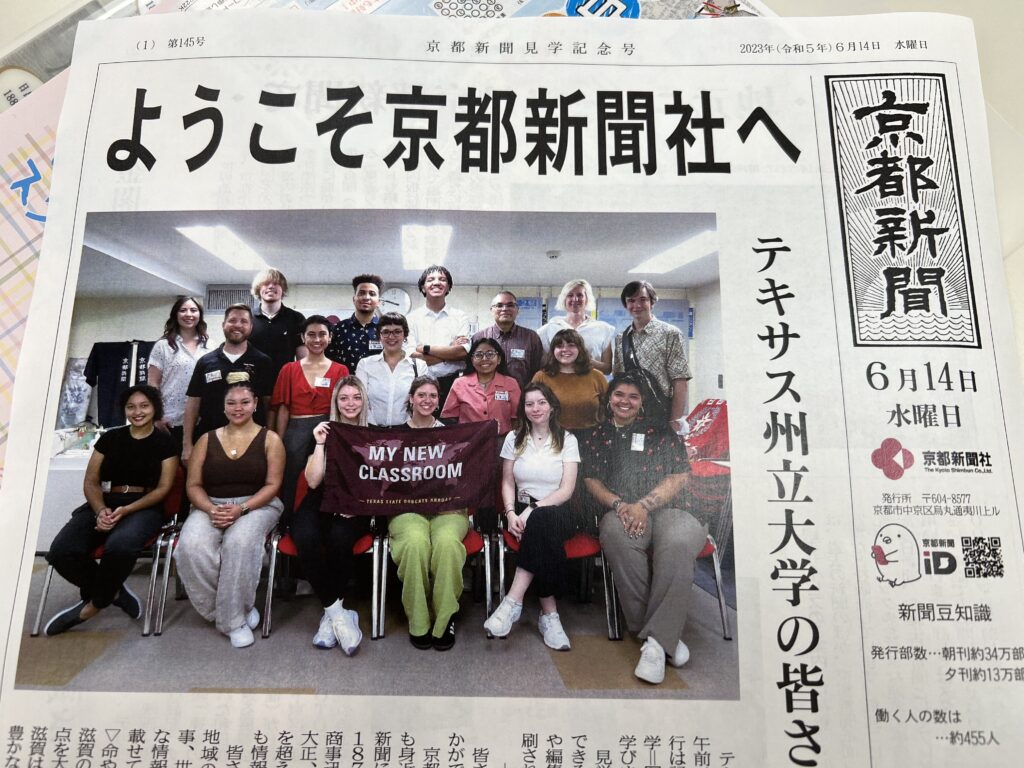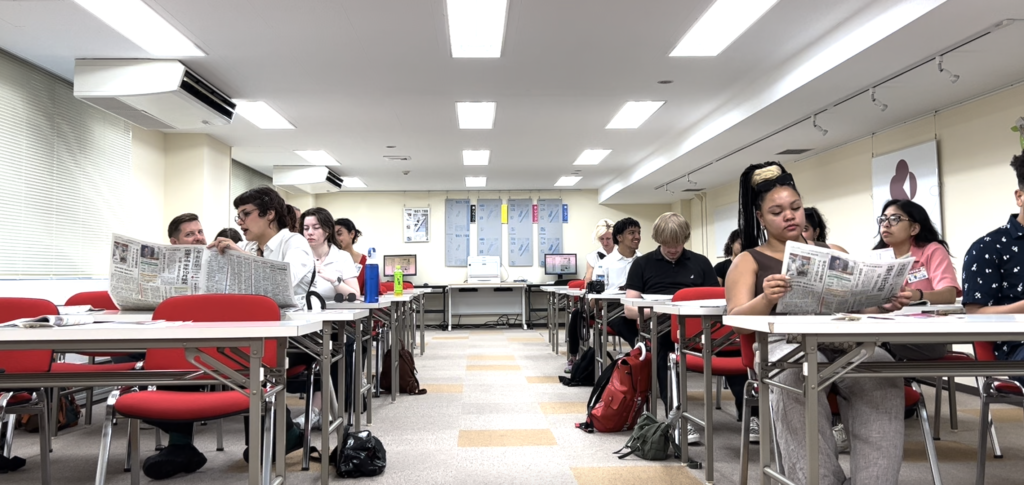
Boasting serene landscapes and steeped in centuries-old traditions, Kyoto stands as a captivating city that beautifully harmonizes the old and the new. At the heart of this enchanting metropolis lies the Kyoto Shimbun, a prominent newspaper that serves as a lens into the rich world of Kyoto’s culture, history and contemporary developments.
Anyone familiar with the Kyoto Shimbun knows its role in preserving the city’s heritage, reporting on local news and fostering connections between tradition and innovation.
How the sausage, er, the shimbun gets made
Founded in 1879, the Kyoto Shimbun serves the Kyoto and Shiga prefectures. It distributes more than 350,000 of its morning edition each day, and about 130,000 of its evening edition. In addition to home deliveries, copies are sold at various convenience stores and markets – much like newspapers in the U.S.
The Kyoto Shimbun employs about 500 people; 270 are editorial staff, 75 are printing press staff and 110 are business staff.
Each day, the editorial desk has access to about 3,000 news topics, between local news and national and international news that comes through on the news wire, according to Midori Dei, a Kyoto Shimbun employee. Those 3,000 topics are narrowed down to the about 100-200 that actually end up in print.
In a true epitome of “if it ain’t broke, don’t fix it,” this Japanese newspaper operates just like newspapers here in the States:
- Reporters work around the clock to write their stories; all of these stories are subject to approval for the print edition. As all reporters know: sometimes your story won’t make it in the first edition!
- Around 4 p.m., a “special division” meets to determine what news pieces will go into the morning edition, Dei said. This is what is known as a budget meeting. Barring any breaking news, this meeting lasts around 40 minutes, Dei said.
- Stories go into an editing queue, and editors check the copy.
- As copy is approved, page designers begin to plug it into the day’s layout.
- Photos are sent over from the Kyoto Shimbun’s expansive photography team. According to one photographer on the team, each photographer will take up to 1,000 photos at an event. They’ll choose a handful, about four or five, to send to the editors, who choose the final photo.
- As layouts are completed, designers print physical proofs for editors to review and approve.
- Line editors meticulously read through proofs, marking any changes with a classic red pencil.
- Final changes are made, and the pages are sent to the printer. As the papers come off the press, there is one more quality assurance check before the papers are loaded into trucks for distribution
All in all, the process takes about 12 hours from the budget meeting to distribution. Around 10 a.m., the process starts over again for the evening edition. However, the evening edition is a bit smaller, and distribution is more limited. Any breaking news that occurred after the morning edition will go into the evening edition, as well as less-prominent news pieces that did not make the cut for the morning paper.
A guardian of tradition
Kyoto is renowned for its cultural heritage, and the Kyoto Shimbun serves to guard that heritage, dedicating its pages to celebrate and protect the city’s historical and artistic treasures.

The newspaper chronicles Kyoto’s UNESCO World Heritage sites, including the iconic Kiyomizu-dera, Kinkaku-ji (Golden Pavilion) and Fushimi Inari Taisha, shedding light on their significance and the efforts made to preserve them for future generations. The Kyoto Shimbun also delves into Kyoto’s traditional arts and crafts, from the elegant tea ceremonies and ikebana (flower arranging) to the intricate art of kimono-making.
Through insightful articles and interviews, readers are given a window into the lives of artisans and the methods they employ to ensure the continuity of these cherished traditions.
Keeping it local
The Kyoto Shimbun also plays a crucial part in reporting on local news, keeping residents and visitors informed about the city’s developments, events and social issues. From politics and economy to education and healthcare, the newspaper provides comprehensive coverage of the issues that shape daily life in Kyoto.
Readers of Kyoto Shimbun are kept up to date with the city’s cultural festivals, seasonal events and community initiatives. The newspaper showcases the vibrancy of Kyoto’s calendar, including the iconic Gion Matsuri, Hanatoro (the Path of Flowers) and the Kyoto International Film and Art Festival. Through its coverage, the Kyoto Shimbun fosters a sense of community, uniting the residents and visitors in their shared experiences and celebrations.
According to Dei, Kyoto readers distrust much of what they read online. With the vast amounts of disinformation on the Internet, this is unsurprising. However, the newspaper is still a trusted source, reinforcing the Kyoto Shimbun’s duty to inform readers with reliable information.
Fostering the dialogue of tradition and innovation
As Kyoto evolves with the changing times, the Kyoto Shimbun serves as a platform that bridges the gap between tradition and innovation, showcasing the city’s dynamic progression. The newspaper explores the intersection of Kyoto’s traditional heritage with modern advancements in technology, arts and sustainable practices.

The Kyoto Shimbun highlights projects where traditional craftsmen collaborate with contemporary designers, resulting in unique creations that honor Kyoto’s legacy while embracing innovation. The newspaper also focuses on Kyoto’s efforts to promote eco-friendly practices, such as sustainable architecture, renewable energy and preserving the city’s natural landscapes. It even explores the fusion of traditional and modern cuisine in Kyoto’s vibrant culinary scene.
Even the Kyoto Shimbun’s logo symbolizes this bridge between new and old: while it undeniably has a sleek, modern look, the logo’s half-circles represent the mountains surrounding Kyoto, while the triangle in the middle symbolizes the famous Lake Biwa. The white space created by the triangle also brings to mind the letter “K,” for Kyoto. This logo might blend in well at, say, SXSW, which highlights contemporary innovation. Yet, it is comprised of elements meant to represent the heart of the city’s heritage.
The Kyoto Shimbun stands as a beacon of knowledge, capturing the essence of Kyoto’s past, present and future. The newspaper showcases the city’s ability to adapt while cherishing its cultural roots, serving as a bridge between generations, fostering an appreciation for Kyoto’s rich cultural tapestry.










